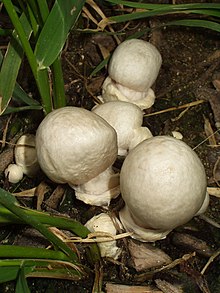IS THAT MUSHROOM SAFE?
 |
| Sulfur Shelf or Chicken of the Woods (Edible -Choice) |
The question and concern from family and friends when we
tell them we forage for mushrooms (and other food) is sometimes
overwhelming. Though we appreciate the
concern, we sometimes wonder why. It is
probably because of the lore behind mushrooms killing the unsuspecting person,
or portrayal by the film industry with the assassin posing as a chef feeding
his target a poisoned mushroom soup.
There is also the occasional report of a child (or drunken adult) unsuspectingly eating mushrooms from the yard
and ending up in the emergency room.
While all of these situations are plausible and can happen, they are all
easily avoidable.
Though it is true that toxic and even deadly mushrooms are
quite common, some basic safety tips will avoid poisoning for you or your
family. We are specifically talking
about mushroom foraging, but the same rules apply for plant foraging.
#1: Do not eat
anything if you are not 100% sure what it is.
We continually say this as does every person and book that teaches
foraging. It is the #1 most important
rule….positive identification. There are
numerous field guides, identification guides and internet sites available. A google search of foraging clubs and classes
in your area can also be helpful to attend or join. WHEN IN DOUBT THROW IT OUT!
 |
| Destroying Angel (toxic / deadly) |
#2: Know what NOT to
eat! Knowing what is toxic is probably
more important than knowing what is edible.
If we think back to childhood, this was a basic premise that are parents
instilled. Stay away from things you
know can harm you. In the case of
mushrooms, there are really only a few species that are truly deadly and a
handful of others that will make you sick.
Learn how to identify these first.
#3: Nearly all wild
mushrooms need some processing before being consumed. Most should be cooked whether by frying,
boiling, baking or grilling. Many can be
dehydrated or pickled and a few can be frozen to be later used in your favorite
dish. Many field guides and internet
sites have recommendations for preparation.
#4: Try only a small
sample or taste the first time you try a new type of mushroom (or foraged food). Wait at least 24 hours before consuming more (some guides recommend waiting 48 hours). Even if you are sure about the mushroom (or
any foraged food) you have, some people can adversely react. Some wild mushrooms may not affect one
person, but make the next person ill.
All people are not built the same in regards to what they can and cannot
eat.
If a person follows these basic rules, a safe and happy
foraging experience will be the outcome.
Our ancestors followed these rules and most lived long happy lives. There is a valid argument as to whether eating
these "back to nature foods, could actually mitigate many of the chronic illnesses
we have in the modern world.
Anecdotally, we have noticed a significant reduction in some of our
minor chronic health issues over the past few years including allergies and gastro-intestinal problems. This increase
in health has coincided directly with our increase in dietary variability
including wild and foraged foods. We
feel better physically and feel better socially by not contributing to the
over-processed food industry.

No comments:
Post a Comment